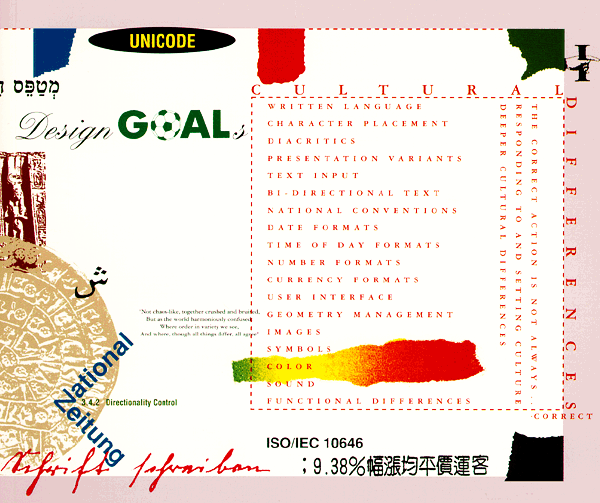 Jane C. Blake,
Jane C. Blake,
Managing Editor
Engineering products for international markets is a multifaceted
undertaking, as it entails the adaptation of computer technology
to the unique and varied ways cultures communicate in written
languages. The papers in this issue describe some of the cultural
and technological challenges to software engineers and their
responses. Topics include conventions of culture and language,
internationalization standards, and the design of products for
local markets.
Product internationalization begins with identifying the cultural
elements and user expectations that the software must
accommodate. Tim Greenwood has written a tutorial that provides
insight into the cultural differences and the complexities of
written languages as they relate to product development. Among
the topics he discusses are scripts and orthography, writing
directions, keyboard input methods, conventions for values such
as time, and user interfaces.
As a counterpoint to the complexity of languages and cultures,
industry engineers and organizations have developed
internationalization standards that lend simplicity and
uniformity where possible. Unicode, described here by Jürgen
Bettels and Avery Bishop, is a significant internationalization
standard that accommodates many more complex character sets than
does 8-bit ASCII; software produced using Unicode character
encoding can be localized for any language. The authors discuss
the principles and reasoning behind the 16-bit encoding scheme
and considerations for application processing of Unicode text.
They conclude with approaches for the support of Unicode and
reference the Microsoft Windows NT implementation.
Wendy Rannenberg and Jürgen Bettels have written a paper on
another important standard, the X/Open internationalization
model. X/Open supports multibyte code sets and provides a
comprehensive set of application interfaces. The authors examine
the benefits and limitations of the standard, referencing
Digital's DEC OSF/1 AXP operating system as an implementation.
They close with proposed changes to the model.
René Haentjens' paper is not about a standard per se but about
the ways in which various cultures order words and names and the
methods used in computers to emulate this ordering. He examines
the table-driven multilevel method for ordering universal
character strings, its variations and its drawbacks. The
implications of Unicode relative to ordering are also considered.
The development and adaptation of software for use in local
markets is the common theme of three papers. In his paper, Gayn
Winters identifies several programming practices for the
development of distributed systems and discusses the benefits of
modularity in systems and in run-time libraries to reduce
reengineering effort and costs. However, as Michael Yau notes in
his paper, reengineering is necessary for systems designed when
English was the only language supported in computer systems.
Michael presents an overview of the engineering challenges
encountered and resolved in the creation of local variants of the
OpenVMS operating system to support the Japanese, Chinese, and
Korean languages. A third paper, written by Hiro Yoshioka and
Jim Melton, provides a case study of a coengineering project,
i.e., a project in which engineers from the local environment (or
market) join in the product development process. The case
references the internationalization of the DEC Rdb database
(specifically for Asian markets) utilizing an SQL standard.
The concluding paper focuses on software designed to facilitate
Japanese keyboard input and to reduce reengineering/localization
effort. Takahide Honma, Hiroyoshi Baba, and Kuniaki Takizawa
review the methods of Japanese keyboard input and then describe a
three-layer, application-independent software implementation that
is embedded in the operating system and offers users flexibility
in the choice of an input operation.
The editors are grateful to Tim Greenwood, an architect of
Unicode currently working in the Software Development Tools
Group, for his help in coordinating the development of papers for
this issue and to Gayn Winters, Corporate Consulting Engineer,
Groupware and Shared Engineering Services.
NOTE TO INTERNET USERS: Recent back issues of the DTJ
are now available in ASCII and PostScript formats on
gatekeeper.dec.com in the /pub/DEC/DECinfo/DTJ directory.
|